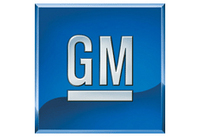App Developers Geeked to Engage with GM
 |
Nearly 2,300 developers registered at the GM Developer Portal Multiple app offerings, a built-in system and familiar code build excitement
DETROIT--July 18, 2013: The idea was so simple that even the judges in a hackathon couldn’t believe no one had thought of it before: Why not have a built-in vehicle application with two buttons – one reading Personal and one Business – that a driver could choose from when starting a trip? The Business button would track mileage and fuel consumption for work-related trips that could be used for expenses or tax reporting.
While a non-business traveler might not care, many other apps being worked on within the GM Developer Portal could be just what another group of drivers are looking for inside their vehicles. App ideas are being developed at a steady rate and could appear in a General Motors vehicle someday. Since January, nearly 2,300 developers have registered on the portal, choosing to engage in a test environment with either GM’s Remote or In-vehicle application program interfaces, known as APIs.
With GM’s Remote APIs, developers can use simulated OnStar connectivity to develop apps that interact with the vehicle remotely, either from a smartphone, tablet or computer. GM’s in-vehicle APIs allow developers to use simulated vehicle information, such as location data or vehicle diagnostics, to create apps that would be incorporated into the vehicle’s infotainment system and would be available to download through a GM AppShop that is being developed.
The GM AppShop would be built into the infotainment system and would allow customers to select from various GM-approved apps they want. Drivers would be able to personalize their vehicle, similar to smartphone personalization. The infotainment system would be able to change over time as drivers’ needs change and as new apps become available.
“We have developed and designed connected vehicles and with that connectivity there’s tremendous range of what can be done with them,” said Nick Pudar, GM director, developer ecosystems, Global Connected Consumer. “There will probably be in-vehicle apps that are popular for everybody, but there will also be a range of apps useful to very targeted segments.”
Creating apps for GM vehicles is an intriguing opportunity for developers. While the number of connected vehicles will never be as large as the smartphone population, today’s vehicle app developers are early players in an uncluttered marketplace.
“It can be very difficult for a new app developer to get noticed or become relevant,” said Pudar. “Since our marketplace will be carefully curated for apps that are meaningful and appropriate for the driving experience, each available app will have much greater visibility. Couple that with the fact that on average we spend about 90 minutes a day in our vehicles, and you have a captive audience.”
GM also allows developers to create apps in familiar HTML5 and JavaScript codes. Whereas creating apps for smartphones may vary by device, HTML5 allows developers to create one app that can reside in all GM infotainment systems: Chevrolet MyLink, Cadillac CUE and Buick/GMC IntelliLink.
GM’s flexible app platform is another advantage for both customers and developers. Developers benefit because it expands the types of apps they can create in vehicles.
“Since our future system is embedded, developers can create apps that use vehicle information. This will create a whole new category of ‘car apps’ we’ve never seen before,” said Pudar. “In addition, an embedded system is the only way to enable apps that can interact with the vehicle remotely. The range of embedded connectivity can be expansive.”
Customers benefit from a built-in system because it enables personalization, allowing for downloadable apps that uniquely interact with them based on the way they use their vehicles.
Even teens still waiting to get their drivers’ licenses can get into the act. Another app idea from the recent TechCrunch Disrupt hackathon in New York was a “Learn to Drive” app that allows the vehicle to act as a virtual driving instructor. The app would provide real-time instructions on driving maneuvers, offer speed limit alerts and keep track of driving statistics such as hours driven, maneuvers completed and nighttime hours driven in compliance with a state’s driver training program.
The teen group won first place in the Automotive category of the hackathon and second place overall.


